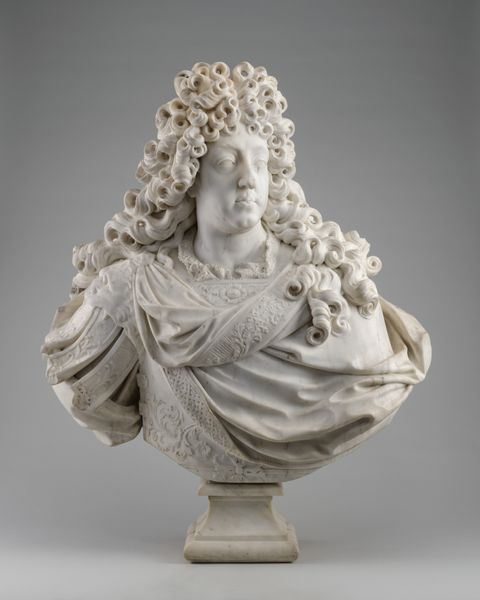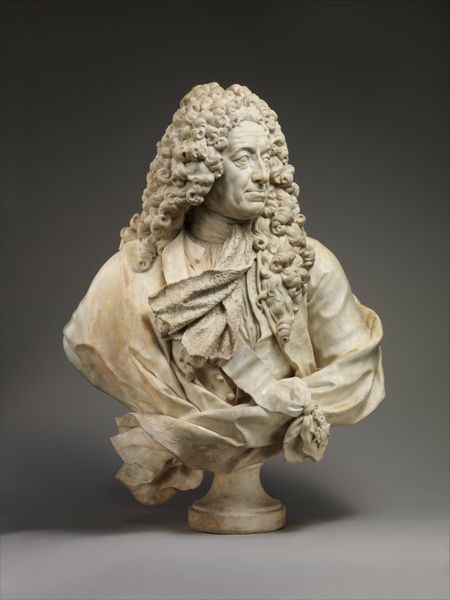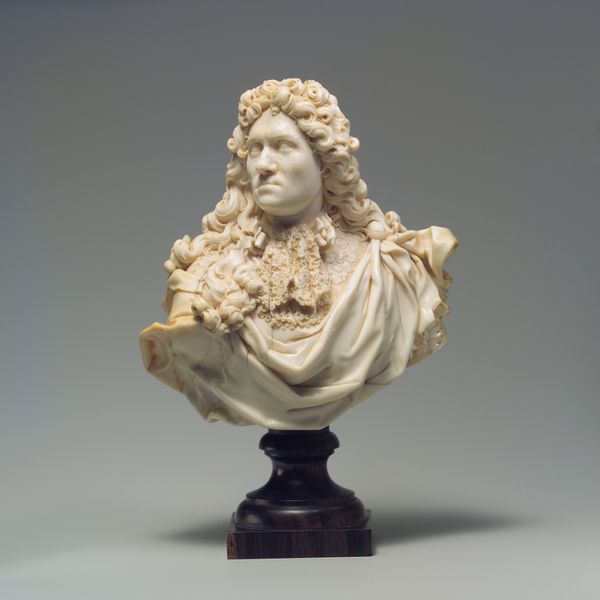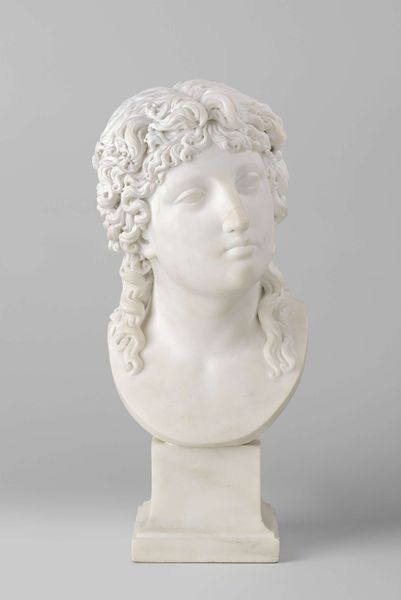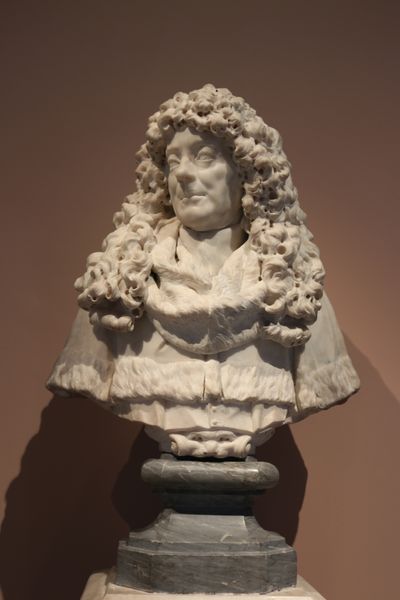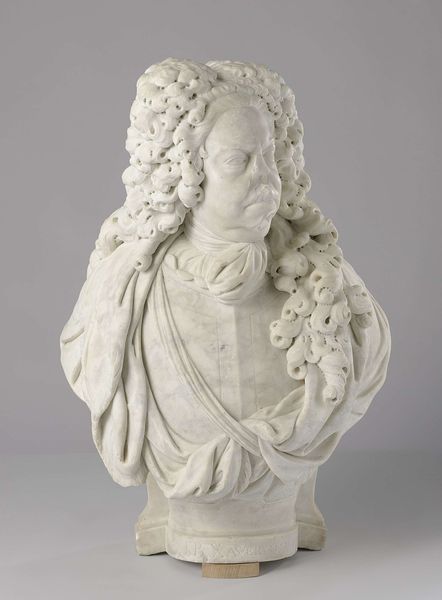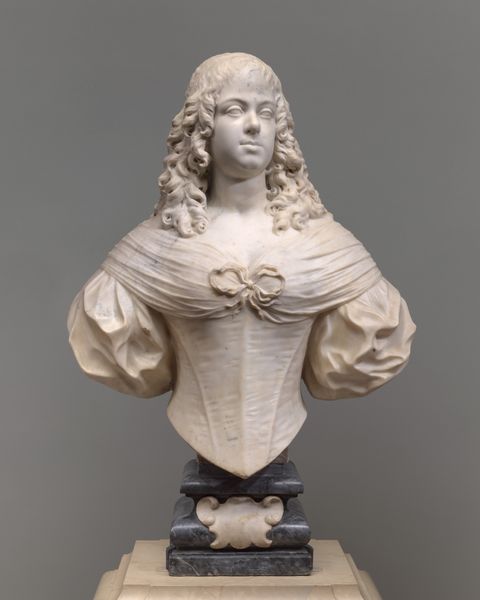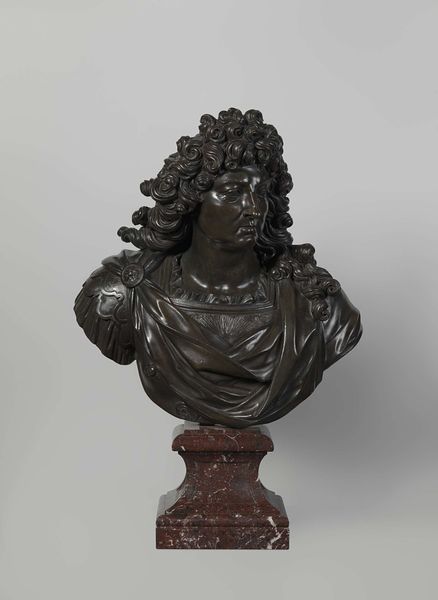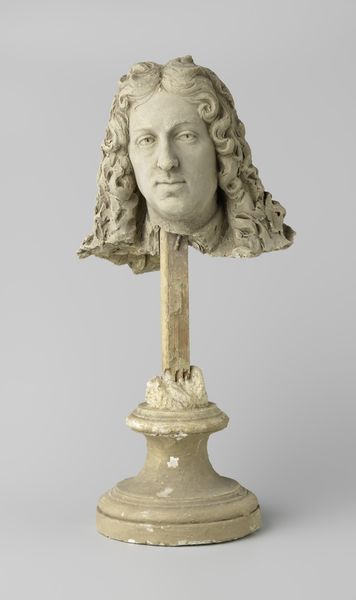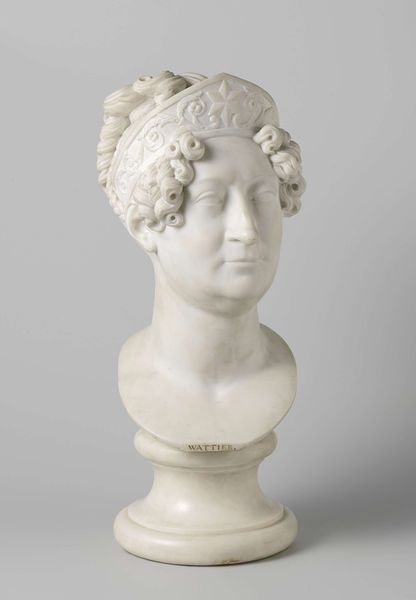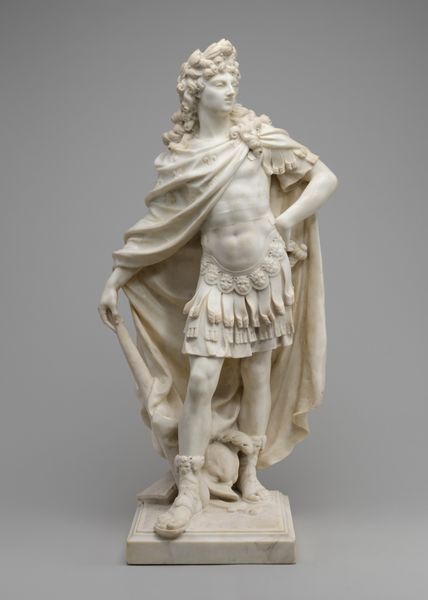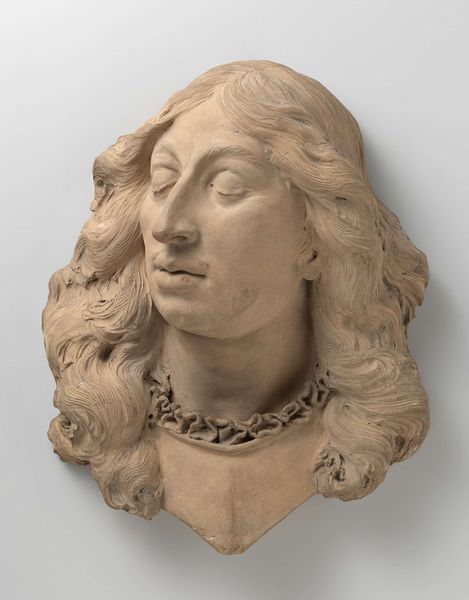
sculpture
#
3d sculpting
#
sculpture
#
3d character model
#
sculptural image
#
unrealistic statue
#
sculpting
#
sculpture
#
vertical object
#
structured
#
3d character modeling
#
statue
Dimensions: overall (w/out base): 74.8 x 75.7 x 43.5 cm (29 7/16 x 29 13/16 x 17 1/8 in.)
Copyright: National Gallery of Art: CC0 1.0
Curator: Here we have a sculpture believed to be from the 18th century, titled "Louis, Duc de Bourgogne." Editor: Oh, my! Well, that’s quite the head of hair! Like a frothy white sea. I immediately imagine him constantly battling to keep the curls out of his eyes. Curator: Indeed, the baroque aesthetic certainly prized elaborate displays of status. We can contextualize this piece within the rigid social hierarchies of the French court. The Duke's clothing, specifically the suggestion of armor beneath the drapery, serves to reinforce his position and power. Editor: True, but the way the light catches those marble curls... it’s almost playful, isn’t it? The sculptor clearly enjoyed themselves here. Gives a lightness, you know? A kind of... “Oh, to be young and have endless curls and power!” kind of vibe. Curator: That interplay between power and presentation is precisely what makes these portraits so compelling. Consider, too, the use of marble itself. A costly material intended for lasting legacy, carefully carved to perpetuate an image of unwavering authority. However, that authority was built upon exploitation and exclusion. Editor: Mmm, it's true; it’s never just a fancy wig and nice armor. And this feels heavy to unpack! But I find myself wondering: did Louis himself ever giggle at his own curls? Did he feel the weight of that armor and long for simpler days? Curator: Those imagined intimate moments, while compelling, risk romanticizing a figure complicit in systems of oppression. Analyzing portraits like this necessitates engaging with both the artistry and the politics of representation. Editor: I agree, absolutely! It’s complex, and maybe that is what makes it interesting. We bring ourselves, our feelings, our doubts to these things. Well, I am leaving with questions, which is always a sign of good art, no? Curator: Absolutely. The questions and critical dialogues that artworks provoke are precisely where we find new ways of seeing and understanding.
Comments
No comments
Be the first to comment and join the conversation on the ultimate creative platform.
